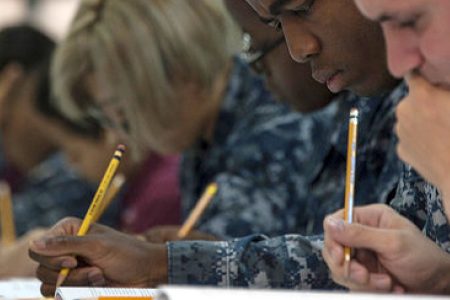Bullying and autism: blaming the victim?
When it comes to bullying, we often focus on the victim, who is then often offered social skills training. Yet, when children with autism are bullied, is this really appropriate?
Perhaps the others should learn the value added by diversity, in this case, autism?
Difficult to pinpoint
'At the Dutch National Autism Conference (March 2019), I gave a lecture on bullying and autism. Most people associate bullying with name-calling or physical abuse. Fewer people think of the subtler forms of bullying, like always being last to be picked for the team. Or being excluded from play. For example, in the playground we observed one child being stopped from going down the slide by another who blocked his path. As soon as the excluded child climbed back down the steps, the blockade ended and other children happily slid down. Although the first form of bullying is clearly identifiable, the second is not, and often goes unnoticed or is difficult to pinpoint.'
To be accepted by the group
Not only children and adolescents, but also adults with autism are bullied more often than others. So where to start if you want to be part of the group? For example, if you don’t necessarily want to participate in all group activities, but do want to be heard at times to express your opinion on things? Moreover, being socially excluded, time and time again, changes a person. These children and adolescents develop more fear and shame as a result, and start to behave differently. This, in turn, makes it even harder for them to be accepted by the group.
The person bullied ends up in a vicious circle
We studied the longitudinal effects of bullying on adolescents with and without autism (9 to 15 years old). The findings confirm that adolescents with and without autism develop more shame as a result of bullying. The young people with autism who reported more bullying, also reported increased levels of anger. More anger, in turn, may more easily trigger bullies, so the person bullied ends up in a vicious circle. When trying to translate these research findings to practical use: what could professionals, parents, or people with autism do now? The first solution that comes to mind might be to focus on emotion regulation problems in adolescents with autism, or to offer them social skills training. But does that not amount to blaming the victim?
Social skills training shouldn’t be raised in the context of bullying
Children and adolescents are bullied for many different reasons: for having the wrong color glasses, or sticking out ears, or for being different due to hearing loss or autism. The majority of others, including those not actively involved, think the victim is to blame: “He asked for it”. So if we tell children who are bullied that they need social skills training, we are confirming this image. The message to the targeted child is: You are not good enough. If you behaved better, or fitted in better, you would not be bullied. Of course, there’s nothing wrong with social skills training, and many of us could benefit from it, but it shouldn’t be raised in the context of bullying. If we want to tackle bullying, we should not focus on the targeted child, but on all the others involved: the bully, his or her helpers, and the complicit group of onlookers who legitimize the bullying through their silent approval.
Bullying is always a group process
One child cannot change the group. Moreover, if that particular targeted child moves to another school, someone else will become the target. In other words, all children in the group have to learn important new insights, such as better awareness of what it is like to be different. What is it like to sit in class and not understand the jokes, or not hear what has been said? Even wearing earplugs for a day could be a start. But it’s also important to take on board the idea that someone can be different and yet still be a welcomed member of the group. Inclusion does not mean homogeneity, but acceptance and respect for each other’s differences.
Why not honor the enrichment of diversity?
All individuals with autism are unique. But there are certain strengths that can contribute positively to group that can more often be observed in individuals with autism than in those without. The need for orderliness: making clear appointments and plans. Honesty: if you ask for the truth, you’ll get it. And loyalty: keeping promises.
To change the group process
'At the Dutch National Autism Conference, I presented two successful anti-bullying programs that aim to change the group process, by including the teachers, parents, and all children in the class or school:
- KiVa (from Finland, implemented in the Netherlands by Veenstra, Groningen)
- NoTrap (from Italy, developed by Menesini and others)
One remark after my lecture was ‘Nice lecture, but not so much on autism, perhaps?’. And that is correct, because if we want to tackle bullying, we should look beyond the targeted child and focus on the group environment instead.'
Read more: Boys with autism respond more angrily to bullying
Autism Awareness Week 2019
Read also: Autisme werkt (Dutch)





